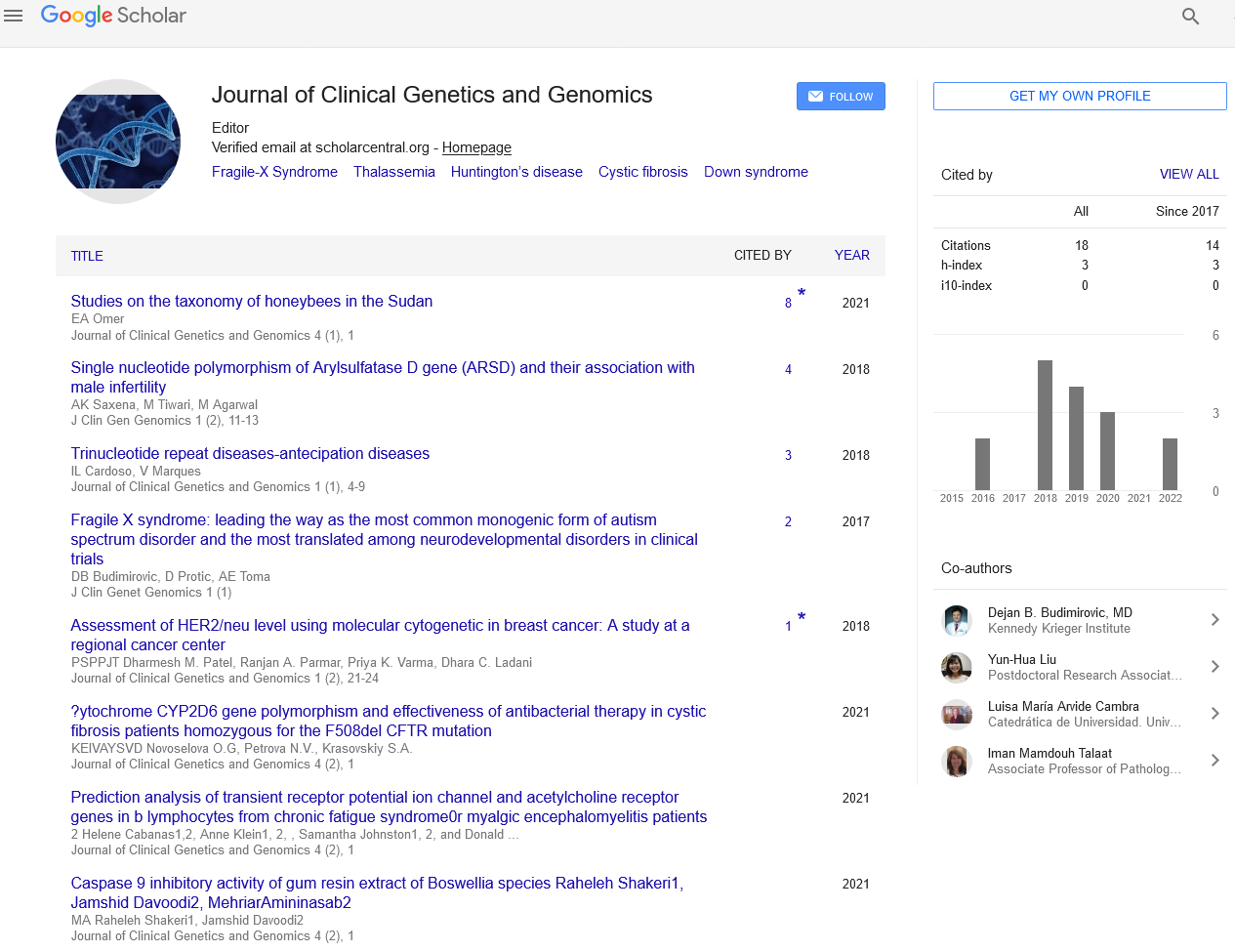Genotype-phenotype expression in humans
Received: 01-Dec-2021 Accepted Date: Feb 14, 2022; Published: 21-Feb-2022
Citation: Jori J. Genotype-phenotype expression in humans. J Clin Gen Genomics 2021;4(4):1.
This open-access article is distributed under the terms of the Creative Commons Attribution Non-Commercial License (CC BY-NC) (http://creativecommons.org/licenses/by-nc/4.0/), which permits reuse, distribution and reproduction of the article, provided that the original work is properly cited and the reuse is restricted to noncommercial purposes. For commercial reuse, contact reprints@pulsus.com
Description
It was first noticed 100 years ago that mutations have a tendency to affect and additional phenotypic characteristic, a phenomenon that was called 'pleiotropy'. Because pleiotropy was found so frequently, the impression arose that pleiotropy is 'universal'. However, measureable estimates of pleiotropy have not been available until recently. These estimates show that pleiotropy is highly restricted and are more in line with the notion of variational modularity than with universal pleiotropy. This finding has major implications for the evolvability of complex organisms and the planning of disease-causing transmutations.
The speed at which genes are discovered has far outpaced our ability to comprehend their biological function-in other words, the phenotypes they cause. Large-scale phenotyping technologies that are both efficient and comprehensive are required. Because phenotypes are numerous and diverse, and they can be observed and annotated at the molecular, cellular, and organismal levels, this is a tough task. As a result, new technologies and approaches will be necessary. I outline recent efforts to build novel and efficient tools for evaluating cellular phenotypes in this paper.
• Technological advancements have dramatically increased the amount of omic data available today. Previously, each type of data was analysed separately, but new methods for combining omic data sets to predict complex phenotypic features are developing.
• The offered strategies have a variety of strengths and limitations. Specific forms of data, different sorts of scientific inquiries, and different types of underlying genetic models all require diverse approaches.
Recent technical advancements have broadened the scope of available omic data, which now includes everything from whole-genome sequencing to substantial transcriptomic, methylomic, and metabolomic data. The creation of effective models that predict phenotypic traits and outcomes, the elucidation of relevant biomarkers, and the generation of vital insights into the genetic basis of the heritability of complex traits are all essential goals of these data studies. To fully exploit the utility of these comprehensive highthroughput data, sophisticated and advanced analysis tools are still needed, finding actual correlations and lowering the amount of spurious associations. In this, we look at some of the newer techniques, methods to the data integration, such as meta-dimensional and multi-staged studies, with the goal of improving our understanding of how genetics and genomics play a role in complicated outcomes. An enhanced knowledge of the association between genetic variation and human phenotypes may be revealed with the usage and continued development of these tools. Pleiotropy refers to the phenomenon of one genetic factor or one transmutation affecting multiple phenotypic traits. It has widespread implications in genetics, disease, development, ageing and evolution.
• Pleiotropy's definition is clear, but its measurement is difficult. This is due to a number of complicated aspects, including the way traits are defined, dependency among features, the traits studied, and the power of detection.
• Pleiotropy has recently been evaluated by mapping the QTLs underlying particular groupings of phenotypes and phenotyping gene knockout or knockdown mutants of model organisms, notwithstanding the aforementioned obstacles.
• Empirical data reveal that, contrary to current theoretical models of pleiotropy, the average phenotypic effect of a mutation on a characteristic increases as the number of traits affected by the mutation grows.
• The 'cost of complexity' conundrum is resolved when empirical patterns of pleiotropy are considered, which states that complex creatures are less adaptable than simple ones due to the limits imposed by pleiotropy.





